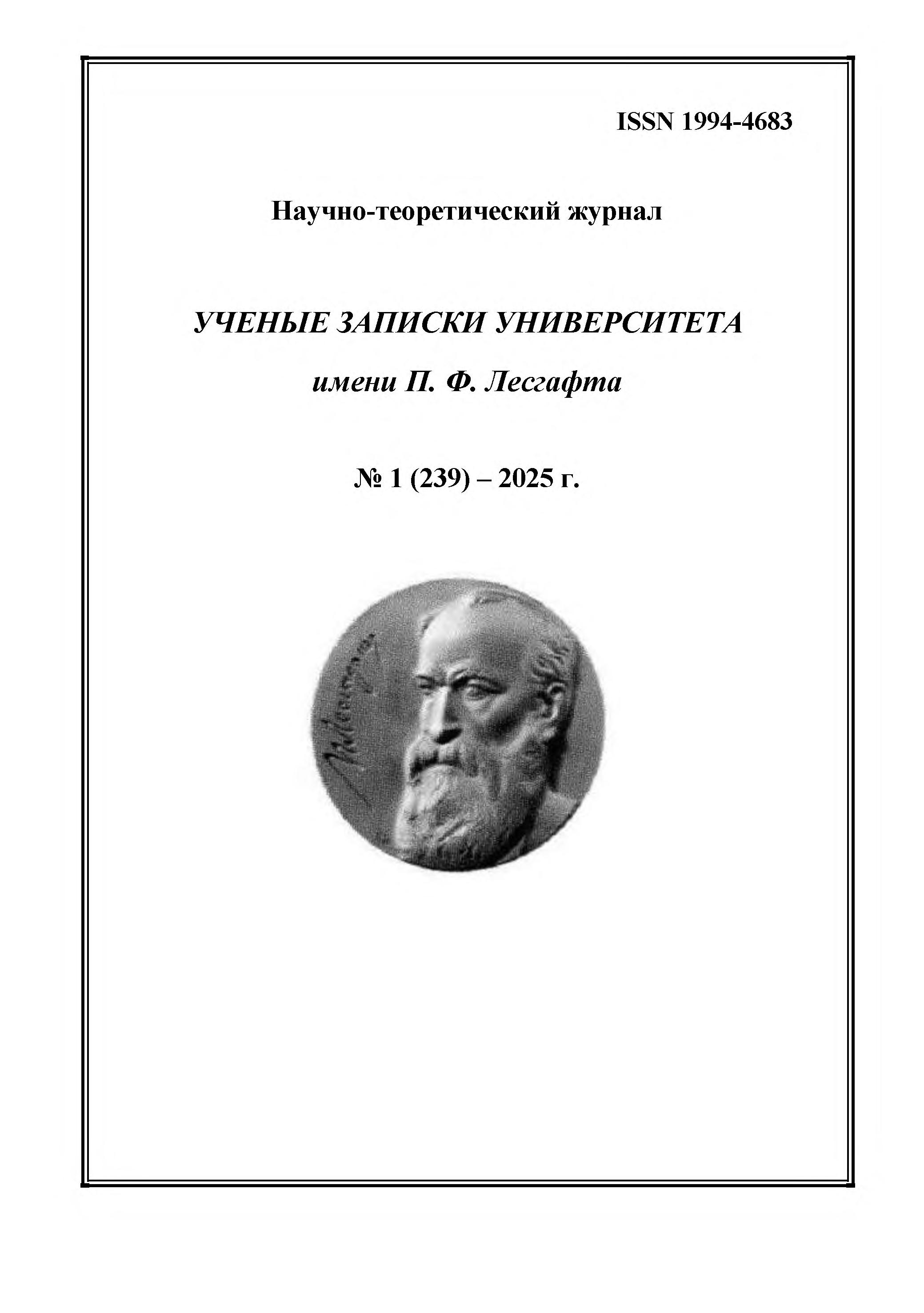Lesgaft National State University of Physical Education, Sport and Health
from 01.01.2018 to 01.01.2022
Saint-Petersburg, St. Petersburg, Russian Federation
Russian Federation
CSCSTI 77.29
The purpose of the study is to compare the indicators: high-intensity accelerations and decelerations, maximum speed, running at a speed of 19.8-25 km/h and over 25 km/h among football players of various playing positions participating in the 2022-23 and 2023-24 seasons of the youth football league within the territory of the Russian Federation. Research methods and organization. The study involved players from the youth team "Zenit," which is part of the youth football development department of FC "Zenit," St. Petersburg. The GPS technology Gpexe Pro2 system (Italy) was utilized. The following parameters were recorded: maximum speed (km/h), high-intensity accelerations (>2.5 m/s²), frequency; high-intensity decelerations (>2.5 m/s²); speed zone of 19.8–25.1 km/h, distance covered; speed zone ≥25.2 km/h, distance covered. Research results and conclusions. It has been established that football players who participated in the 2023-24 season have lower values in high-intensity running according to GPS metrics compared to players from the 2022-23 season. Coaches working with athletes in the training phase of sports improvement (ages 16-18) are advised to take into account and utilize the proposed competitive benchmarks when planning training sessions that focus on technical, conditioning, tactical, and combined aspects.
football, youth football league, sports training, training load, high-intensity running
1. Vigh-Larsen J. F., Dalgas U., Andersen T. B. (2018), “Position-specific acceleration and deceleration profiles in elite youth and senior soccer players”, The Journal of Strength & Conditioning Research, 32 (4), 1114–1122.
2. Akenhead R., Nassis G. P. (2016), “Training load and player monitoring in high-level football: current practice and perceptions”, International journal of sports physiology and performance, 11 (5), 587–593.
3. Modric T., Versic S., Sekulic D. (2020), “Playing position specifics of associations between running performance during the training and match in male soccer players”, Acta Gymnica, 50 (2), 51–60.
4. Miguel M., Oliveira R., Loureiro N[et al.] (2021), “Load measures in training/match monitoring in soccer: A systematic review”, International journal of environmental research and public health, 18 (5), 2721–2725.
5. Bradley P. S., Sheldon W., Wooster B., Olsen P., Boanas P., Krustrup P. (2009), “High-intensity running in English FA Premier League soccer matches”, Journal of sports sciences, 27 (2), 159–168.
6. Buchheit M. V., Mendez-Villanueva A., Simpson B. M., Bourdon P. C. (2010), “Repeated-sprint sequences during youth soccer matches”, International journal of sports medicine, 31 (10), 709–716.
7. Hewit J., Cronin J., Button C., Hume P. (2011), “Understanding deceleration in sport”, Strength & Conditioning Journal, 33 (1), 47–52.
8. Akenhead R., Hayes P. R., Thompson K. G., French D. (2013), “Diminutions of acceleration and deceleration output during professional football match play”, Journal of science and medicine in sport, 16 (6), 556–561.
9. Morgan O. J., Drust B., Ade J. D., Robinson M. A. (2022), “Change of direction frequency off the ball: New perspectives in elite youth soccer”, Science and Medicine in Football, 6 (4), 473–482.
10. Kai T., Hirai S., Anbe Y., Takai Y. (2021), “A new approach to quantify angles and time of changes-of-direction during soccer matches”, Plos one, 16 (5).
11. Maddison R., Ni Mhurchu C. (2009), “Global positioning system: a new opportunity in physical activity measurement”, International journal of behavioral nutrition and physical activity, 6, 1–8.
12. Varley M. C., Fairweather I. H., Aughey R. J. (2012), “Validity and reliability of GPS for measuring instantaneous velocity during acceleration, deceleration, and constant motion”, Journal of sports sciences, 30 (2), 121–127.
13. Buchheit M., Al Haddad H., Simpson B.M., Palazzi D., Bourdon P.C., Di Salvo V. (2014), “Monitoring accelerations with GPS in football: time to slow down?”, International journal of sports physiology and performance, 9 (3), 442–445.
14. Hopkins W., Marshall S., Batterham A., Hanin J. (2009), “Progressive statistics for studies in sports medicine and exercise science”, Medicine+ Science in Sports+ Exercise, 41 (1), 3.








